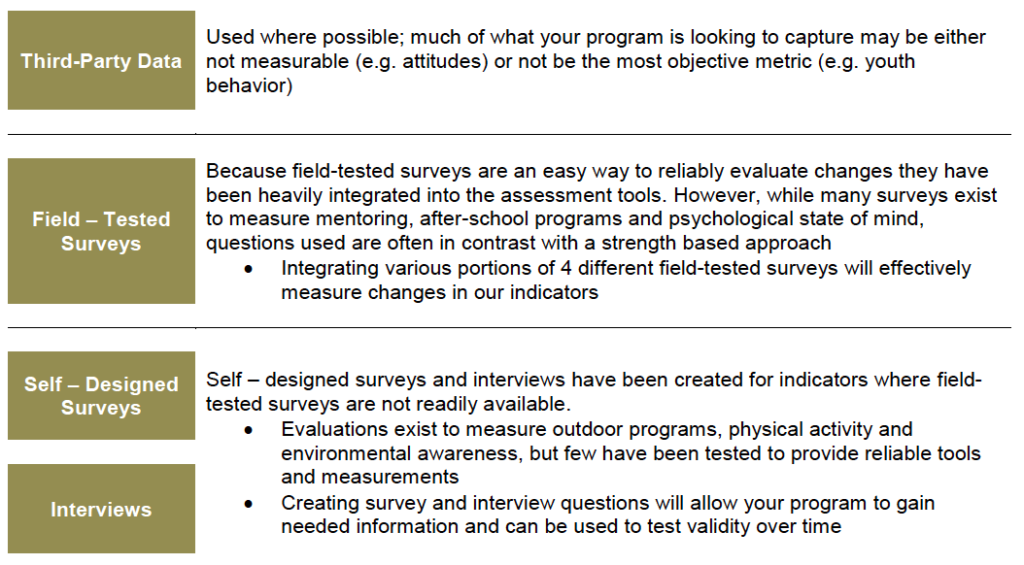Program Evaluation is integral to a successful program. By creating an evaluation plan, collecting the data, and looking at the information objectively you can continue to grow and evolve your program on a successful path. A good resource to become familiar with the process is the TYO Program Evaluation Path. This path gives a good introduction and overview to program evaluation and provides concrete tools that you can use to collect and evaluate your data. All of these resources are free and can be found on TYO.
We focused our last blog on Theory of Change because an effective evaluation is based on a solid understanding of the connection between what you DO (your program activities) and what you CAUSE TO HAPPEN (your program outcomes). Having your Theory of Change in place helps in this part of the process.
Looking at Program Evaluation is a logical next step in your planning process. Knowing what you want to evaluate is an important place to start. There are many areas you might consider when deciding what to evaluate in your program, including:
- Helping determine if you are achieving your mission
- Clarifying how you impact youth
- Facilitating continuous program improvement
- Providing accountability
- Assisting with communication and fundraising efforts
Establishing clear program outcomes will allow you to determine if the changes you hope to occur in the lives if your youth are actually happening. These outcomes may vary for long and short term programs and referencing the examples on our “GUIDE Outcomes and Indicators for Long & Short Term Programs” may help in your process.
While knowing what you are evaluating and why is critical, the tools you use to collect this data and how you collect it are equally important. The guides and templates in the Program Evaluation Path provide you with the methodology behind using different sources of data and practical tools used to collect data.
Data Collection Method Examples:

The final steps of this process are to make sure you are organized in your data collection and that you know how to analyze your data once you have it. Reviewing the samples provided in the path offer some insight into data collection methodologies used in a successful Outdoor Youth Program.
Having a consistent and well thought out program evaluation plan will not only help you analyze your effectiveness and identify areas for improvement, but allow you to communicate your impact with others.
